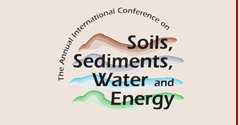Article Title
Detailed CVOC Source Area Investigation In The Context Of A Fractured Bedrock Conceptual Site Model
Abstract
Dissolved-phase transport of groundwater contaminants through crystalline bedrock fractures is often highly heterogeneous and challenging to conceptualize. Groundwater flow can be restricted to a discrete subset of connected bedrock fractures, while contaminant transport may not be well correlated with the degree of fracture-zone hydraulic activity. While characterizing hydraulic interconnectivity between source areas and receptors and between individual wells is a desired component of a conceptual site model (CSM), scale issues may prevent the identification of specific contaminant pathways or the prediction of contaminant concentrations throughout a site. Detailed characterization in known or suspected contamination source areas, in the context of an existing CSM, not only guides remediation and monitoring strategies, but also will enhance understanding of contaminant transport to potential off-site receptors. The case study area in coastal Maine is underlain by fractured metavolcanic and intrusive bedrock, present at or near the ground surface. Water levels are as deep as 120 feet in some wells. Groundwater flow is restricted to fractures, lithologic contacts, or faults within the bedrock. Chlorinated volatile organic compounds (CVOCs) discharged on site from past operations have been detected in wells at concentrations varying from more than 3,000 micrograms per liter to below detection limits, with a heterogeneous spatial distribution. A variety of investigations has led to the development of a CSM for the site. Information obtained from detailed source area investigations may allow identification of specific contaminant pathways within the source area, but not at the greater distances that are present between the source area and some receptors. Investigations, conducted or planned, that focus on the CVOC source areas include: geologic and fracture mapping, surface and borehole geophysical surveys, whole-well and packer sampling, monitoring well installation and angled coring, rock matrix analysis for CVOCs, rock mass characterization, soil sampling, photolineament analysis, borehole radar investigation, hydrophysical logging, packer sampling, and water level monitoring. A combination of conventional and less frequently-applied techniques has allowed an assessment of contaminant transport pathways in the source area, a refinement of the CSM for the overall site, and a more direct evaluation of remedial options.
Recommended Citation
Vernon, James H. Ph.D; Shattuck, Patricia C.; Kauffman, Mark D.; Clemens, Drew M.; Leitch, Robert A.; and Maynard, Donald M.
(2010)
"Detailed CVOC Source Area Investigation In The Context Of A Fractured Bedrock Conceptual Site Model,"
Proceedings of the Annual International Conference on Soils, Sediments, Water and Energy: Vol. 12, Article 36.
Available at:
https://scholarworks.umass.edu/soilsproceedings/vol12/iss1/36
